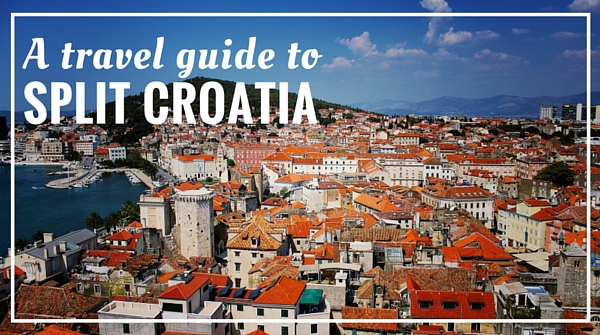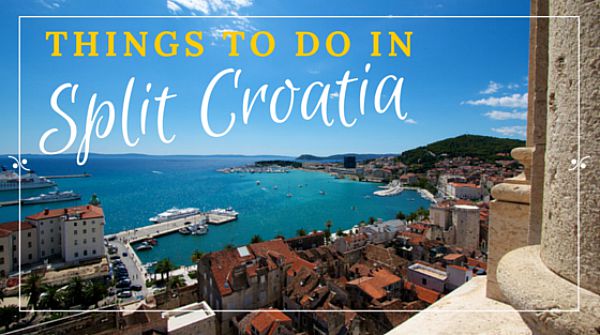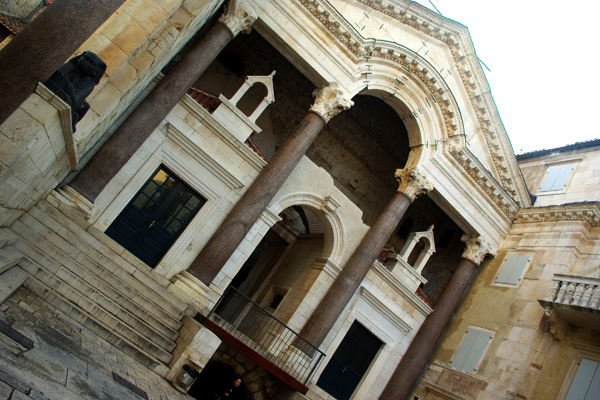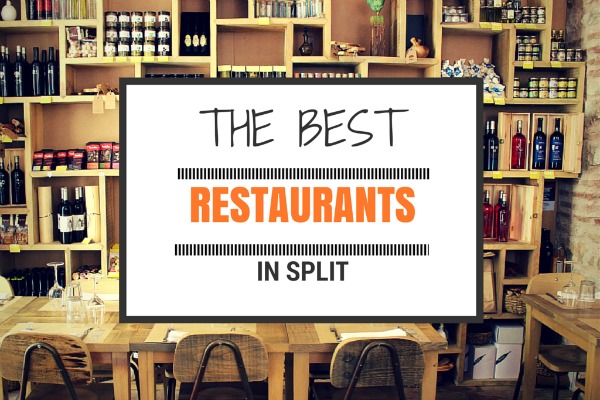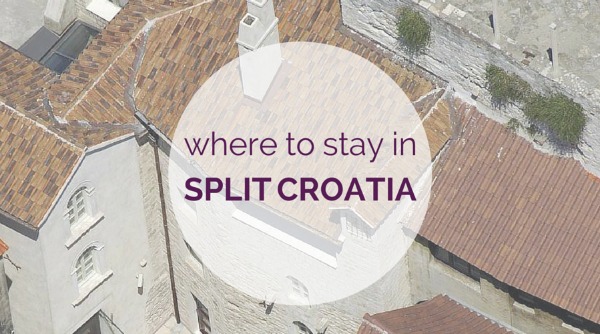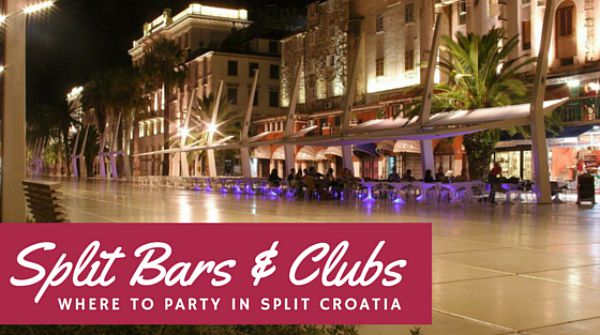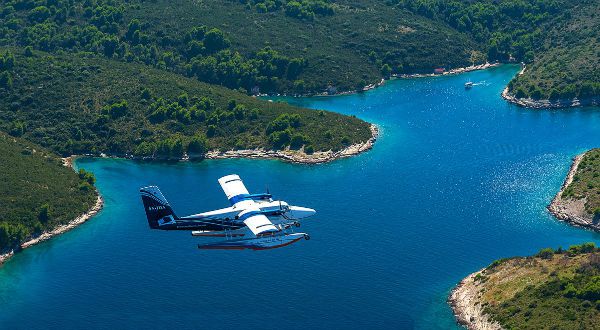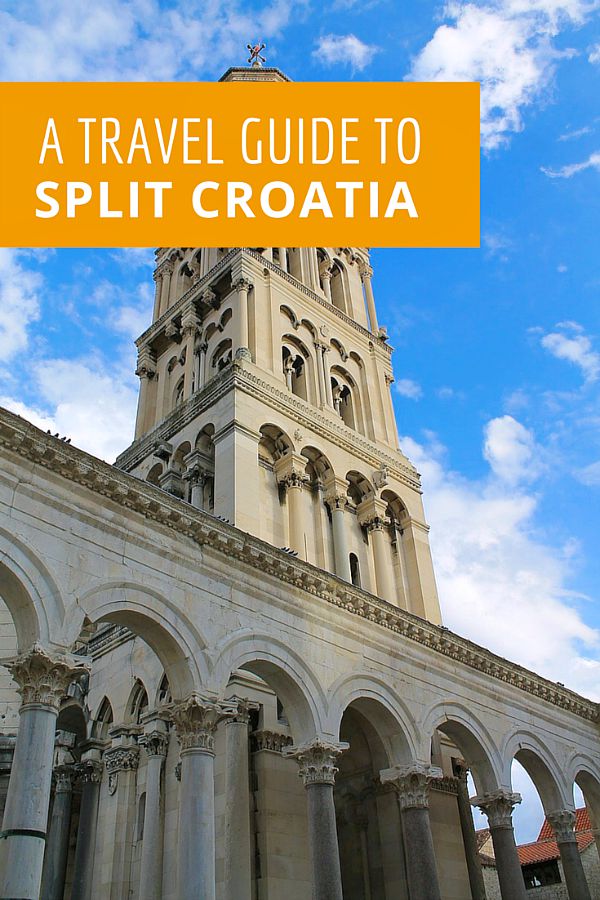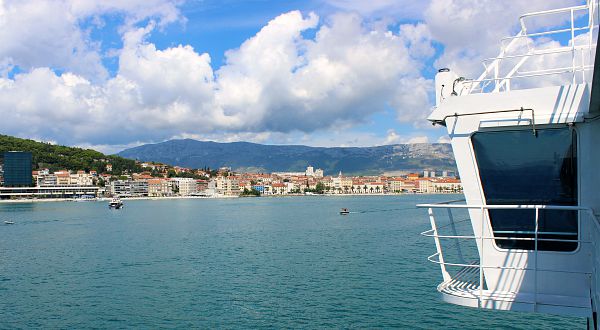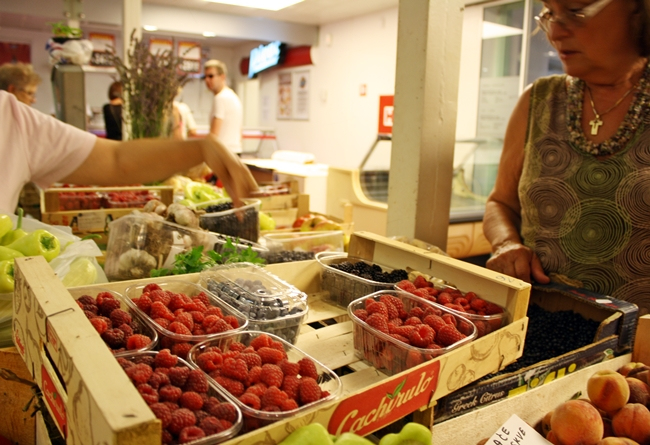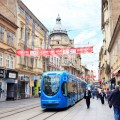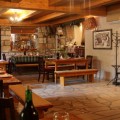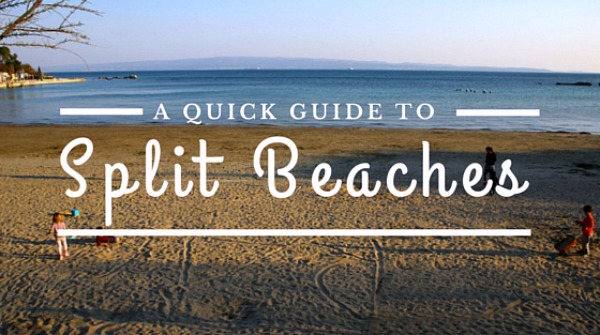
Split–the largest town in Dalmatia and second largest in all Croatia (after Zagreb). Split is a typical Mediterranean city, with a small town vibe, lots of murmur and easy-going locals (Did you know that in Dalmatia locals use a word pomalo (take it easy) as a greeting?).
It began to popular among tourists only recently although Split has always had a lot to offer to visitors to the town. Just ten years ago, Split was a stop over place for tourists catching a ferry to nearby islands, or a bus to another, more exciting tourist destination.
Split was perceived as a port and industrial town, and just another big city. I’m glad that Split transformed into one of the hottest destinations in all Croatia. I simply love this town, and could move here within a blink of an eye.
Located within roman emperor Diocletian Palace, Split’s historic old town dates back to Roman times. This is a living museum, and a place where you’ll find majority of must-see sights in Split.
Location: Split map
Split lies on the central Dalmatia, at the shores of the Adriatic Sea. It lies on a small peninsula. The Marjan Hill rises on the western side of the peninsula, and the Mounts Kozjak, and Mosor rise high on the north and northwest side of the city.
Below is the map of Split.
Best time to visit Split Croatia
Split is an valuable place to visit all year since it is actually one of the rare places in Dalmatia But if you want to experience Split in its full swing, May through October is the best time to visit it. If possible, skip it in July and August, it gets too hot and too crowded.
Reasons to visit Split Croatia
1 | Split is vibrant
Split has an awesome urban vibe, yet it feels slow paced and relaxed.
A 1700 year old Diocletian Palace, a heart of Split, is full of cafés, cool bars, and lovely restaurants. A seafront promenade – Riva – a pride of all people from Split, bustles with people. Even in the midst of a winter, you’ll find locals playing picigin on the Bacvice beach.
2 | Split is still very affordable
Split is seriously cheaper than many other places in Croatia. You can get a full meal for 60 kn; coffe at Riva, a seafront promenade, costs only 8 kn; 0.5L of a local draft beer 20 kn; accommodation is affordable (the only time it gets expensive is during Ultra Festival).
Yes, visit Split while it’s still affordable.
3 | A perfect base to explore Dalmatia
Split is centrally located if you plan to explore Dalmatia. You can easily reach the islands of Hvar, Brac, Vis, and Solta; spend a day exploring Trogir, and roman ruins of Salona; get active in Omis; or visit Krka and Plitvice National Park.
4 | Great food
Dalmatian food is yummy; and many restaurants in Split showcase these traditional dishes: pasticada, a baby beef stew, with gnocchi; stuffed bell peppers with mashed; meat balls in a tomato sauce; grilled small fish with chard; and alike.
5 | All that history
In Split, history is all around you. You won’t wait in long queues in front of some museum to experience it. The old town is 1.700 year old living museum where people live and breath everyday
Things to do in Split Croatia
We’ve written a full post on things to do in Split, and here we bring you just few of them.
1 | People watching at Riva
Split’s famed seafront promenade, Riva, always buzzes with people; it’s lined with cafés and bars where locals spend hours over a coffee or a beer. Simply do like locals do, sip a coffee, and watch the world go by … for hours.
2 | Eat local
We’ve already mentioned that food and restaurants in Split are awesome. We’ve written a post on best restsurants in Split, along with reviews on restaurants we’ve visited recently. Our fave restaurants are Fife, Villa Spiza, Uje Oil Bar, and Kadena.
3 | Have a coffee at Zbirac
Zbirac is the coolest day bar in Split. Located just above the Bacvice beach, Zbirac is locals favorite place to grab a drink. The bar is small, but has a great terrace overlooking the beach and sea. It’s protected from the north Bura wind, so the outdoor terrace is open all year.
4 | Play picigin at the Bacvice beach
A sandy beach located 10 minute walk from the old town, the Bacvice is, along with a seafront promenade, the most popular place in town.
Picingin, a beach ball game invented here, is played in a shallow water with players keeping a ball from touching the water.
5 | Explore the Palace
Just get lost in a maze of allies, cobbled streets, and passages in Split’s old town, and explore a 1.700 year of history.
What to see in Split
Majority of Split’s top sights are located within the old town.
1 | Town gates
Split’s historical town is located within a 1.700 year old Diocletian Palace. The Palace measures approximately 160 m by 190 m. Each of four town’s wall has a gate (Golden Gate, Silver Gate, Bras Gate, and IronGate) located at the center of the wall, dividing the Palace in four quarters.
2 | A bell tower
A bell tower of the church of St. Dominus is one of symbols of Split. Originally built from the 13th to the 16th century, the bell tower went under a complete renovation in 19th century.
The views from the top are fantastic and worth a climb via a narrow staircase. The admission is 15 kn.
3 | Peristyle
The Peristyle, a narrow public square near the Cathedral, is a heart of the Palace, and the place where all guided tours of Split begin or end.
Ancient Roman columns made of red granite, an Egyptian sphinx, entrance to the Palace’s basements, Cathedral, and the Temple of Jupiter, can all be found on the Peristyle.
It’s one of the main landmarks of Split, and it gets crowded st times.
4 | Varos
One of the oldest neighborhoods in Split, Varos is a charming place consisting mainly of traditional stone houses with wooden green shutters.
It’s located on south side of Marjan Hill, just northwest of Diocletan’s Palace.
This neighborhood was established in the 17th century by peasants, and fisherman. Today, it’s full of cozy apartment and room rentals.
5 | Pazar and Peskerija
Split’s green market (Pazar), and fish market (Peskarija) are two best places to feel the pulse of the city, and observe locals as they go about their daily business.
Food and restaurants in Split
Split restaurants: the best places to eat in Split
I enjoy eating out in Split. The town offers a variety of restaurants, tapas and wine bars. Below we list our fave three restaurants in Split, all three showcase a delicious Dalmatian cuisine.
1 | Villa Spiza
Villa Spiza is a tiny little place serving traditional, fresh and unpretentious food, using only locally sourced produce. There are just a couple of tables. Menu is simple, and it changes daily. Expect to pay 40 to 70 kn per dish.
2 | Fife
Fife used to be locals favorite place for marenda (and it still is), but today it bustles with tourists. Located in Matejuska, a small fishing harbour west of Split’s seafront promenade, Fife serves traditional Dalmatian food, like boiled veal and potatoes with a homemade tomato sauce, meat balls in a sauce, baby beef stew with mashed, etc. Expect to pay around 60 kn per dish.
3 | Kadena
Locals favorite restaurant in Split, Kadena is an elegant place with a nice terrace, shaded and with fantastic views over the sea. The place is rather large, and it often accommodates large groups that can be noisy at times. However, the food is sublime, and the service is excellent. A bit pricey; expect to pay around 60€ per person for a 3-course meal with drinks.
Accommodation in Split
A number of properties offering a short-term rentals in Split increases every year. Split generally lacks big hotels, and international hotel chains. Instead it offers a choice of hip hostels, boutique hotels, and vacation rentals.
With majority of accommodations set within historical buildings, Split’s hotels, and apartments are definitely full of character.
For us the best neighborhoods to stay in Split are Diocletian’s Palace, and Varos. In both neighborhoods you’ll be within walking distance from all historical sites, and amidst the city’s hustle and bustle. The only downside is parking, as both neighborhoods are (mostly) car-free.
Our favorite hotels, all located within the old Palace, include Palace Judita Heritage Hotel, Piazza Heritage Hotel, Marmont Hotel, and Vestibul Palace.
Split offers lots of private apartments and rooms to rent. We particularly like Divota Apartments, located in various houses across Veli Varos neighborhood.
For a budget stay in a heart of the city, check hostels Downtown, and Matejuska.
The best sites to look for an accommodation in Split are Booking.com, AirBnB, and a local accommodation site – Click Split.
Split Beaches
Beaches in Split won’t impress anybody. They are simply there to ease a midday heat during summer. Locals rather get out of the town for a swim; either to the neighboring islands of Solta, Brac, or Ciovo; or they head south to Duce.
However, during the week, with little time left after the work, they visit town beaches for the proximity and convenience.
Bacvice, a sandy beach located 10 minute walk from the old town, is the most popular town beach. It’s a perfect beach for a game of picigin with friends. A lovely café bar Zbirac is another reason to enjoy Bacvice. This beach is extremly popular among locals, and almost always crowded.
Just south of Bacvice, you’ll find Trstenik, and Znanj Beach. Locals like them because of the easy parking, and facilities for children.
West of the town center, at the foothill of the Marjan Hill, you’ll find Kasjuni beach. This no-frills pebbly beach has a long breakway that protects it from the wind. Rocky coast at the far end of this beach offers some privacy, and it’s also dog friendly. Not far from Kasjuni, there is another popular beach in Split – the beach Kastelet, or popularly called Obojena.
Bars, Clubs & Nightlife in Split
Nightlife in Split isn’t as wild as in Novalja, or Tisno, but Split still has some of the best nightlife in all Croatia. Clubbing scene in Split is incredibly fun and unpretentious.
Majority of popular bars and clubs are scattered across few streets and neighborhoods. The bar crawl usually starts in the old town, across bars in the Dosut Street, and Pjaca; sooner or later in the night, a party crowd moves to the Bacvice neighborhood.
We should start with Dosut Street as it boasts lots of funky little bars, and has been a late night hangout for ages. Owned by the same family for over 50 years, Figa Food Bar had few face lifts over the time, the last one in 2012. It went under the name Puls, and many locals still call it that name, but today figa is a hip little bar that beside popular cocktails, serves also simple food, like flat bread, home-rolled pastas, and yummy eggs at breakfast. Cool place to hangout throughout day and night.
Ghetto Club, despite its name, is actually a bar featuring an art gallery. A well-kept secret, and locals fave place to hangout, Ghetto is getting more and more popular among touristy crowd as well. The bar has a bohemian feel and a nice courtyard to chill out while sipping your drink. Just behind Pjaca, a popular square within an old town, check Gaga, a tiny bar serving dangerously cheap cocktails. If you like to meet fellow international travelers, head to Charlie’s Backpackers Bar. Charlie’s slogan says it all “founded by Aussies, built by backpackers, and loved by locals”. Drinks are cheap here. For late night clubbing head to Bacvice, either to low-key Bacvice Club, or fancy Tropic bar.
Popular events
Lots of events and festivals take place in Split throughout a year. However, many of them are intended for locals more than for tourists. Below you’ll find the most popular events in Split, worth attending if you are in town on selected dates.
1 | Ultra Festival
Ultra Europe is probably the largest music festival held in Croatia. The festival takes place in Split since 2013. A week of music, and fun, with Ultra Beach taking place on the Amfora Beach on Hvar Island. Previous line ups included Carl Cox, David Guetta, DJ Tiesto, and many others.
2 | Split beach festival
Split Beach festival is an electronic music festival that takes place on Split’s famed sandy beach – Bacvice – every year at the beginning of August. In 2015, a line-us included Fedde Le Grand, Dimitri Vangelis and Wyman, Paul Oakenfold.
3 | Days of Diocletian
Taking place in mid-August, the Days of Diocletian, celebrate Split’s roman past. The event takes place across the palace with costumed performers, theater and music events, exhibition and a traditional food.
4 | All senses weekend
Last weekend in October, Split hosts the All Senses Weekend, a gourmet and musical event taking place in selected wine bars and restaurants across the town.
Travelling to Split
Reaching Split is really easy. Split is the second largest travel hub in Croatia after Zagreb. Split can be reached by plane, train, bus, ferry, and even a hydroplane.
By plane
Split Airport, Resnik (SPU), is located 20 km northwest of downtown Split. It’s actually very close to Trogir. A shuttle service operates between Split Airport, and downtown. Shuttle buses depart 20 minutes after landing. It takes 30 min to reach Split downtown, and it costs 30 kn per person. You can also reach downtown with a taxi, and that will set you back 30€.
You can also consider flying into Zadar airport, as it’s only 150 km northwest of Split. Zadar Airport has some pretty cheap Ryanair flights, and can be a viable option to reach Split.
Flights to Split
1 | Czech Republic
Smartwings flies into Split airport from Prague from mid-May until October.
2 | France
Easyjet flies into Split Airport from Mulhouse on Sunday from mid-July until October, and from Lyon throughout July and August.
Volotea flies from Nantes from July until October.
From Paris CDG to Split you can fly with Easyjet in July and August, or with Croatia Airlines from May until October; while from Paris Orly you can fly with Easyjet also in July and August.
3 | Germany
Easyjet flies to Split from Berlin Schoenfeld from end of June until the end of October. In the high season, from 20.7. until 25.8., there are as many as five flights a week. Germanwings also connects Split and Berlin Tegel two times a week from April through October. Additional flight runs from April to the end of July.
Easyjet also flies to Split from Hamburg, from May through October, as many as three times a week in July and August.
Hamburg and Split are also connected with a Germanwings, three times a week from April through October.
Germanwings also flies into Spit airport from April through October from Cologne, Dortmund, Hannover and Stuttgart.
Air Berlin flies into Split Airport from Leipzig, and Nuremberg.
A Travel Guide To Split Croatia
4 | Greece
Croatia Airlines connects Split with Athens once a werk on Saturday, from May to October.
5 | Italy
Vueling offers flights into Split Airport from Catania, Florence, Palermo, Rome Fiumicino, and Turin from late June until mid-September. Croatia Airlines connects Split with Rome a year around.
Volotea flies from Venice, while the Easyjet flies into Split Airport from Rome, Naples, and Milano.
6 | Netherlands
Easyjet flies into Split Airport from Amsterdam. It starts with at the end of April until mid October. From 13.5. to 28.9. flights are scheduled four times a week.
Transavia flies into Split Airport from Rotterdam five times a week, from 8.7. until 26.8.
7 | Scandinavia
Malmo Aviation, SAS, and Norwegian connect Split with Copenhagen, Gothenburg, Helsinki, and Malmo.
8 | Spain
Vueling connects Split with Barcelona from mid-April until late October. It starts with one flight a week, and increases it to one flight a day throughout August.
9 | Switzerland
Easyjet flies from Geneva.
10 | UK
Easyjet flies into Split Airport from Belfast, Bristol, Glasgow, London Gatwick, London Luton, London Stansed, Manchester, and Newcastle.
Jet2 flies into Split Airport from Birnimgham, Edinburgh, Leeds, and Manchester.
Norweigian flies from London Gatwick, and the Wizzair from London Luton.
By train
You can also reach Split by train from Zagreb. The one-way ticket costs approx. 25€, and return ticket costs 42€.
Trains run four times a day, from 15th of June until 15th of September. The rest of a year, they run twice a day.
The train takes six hours.
By bus
Intercity buses connect Split with Zagreb, and many coastal towns, and they run frequently throughout a day, and a year around.
It takes 5 hours to reach Split from Zagreb, and a one-way ticket costs 26€.
Budget tip: If you travel on budget, and don’t mind extra time spent on bus, check bus lines running off the highway. They take 7 hours to reach Split, but one-way ticket costs 22€.
Split bus and train station, as well as a ferry port are located one next to another, and within a short walking distance from the old town.
By ferry
Split is a major ferry port for the central Dalmatian islands. Besides local ferries, ferries also connect Split with Ancona in Italy, Rijeka and Dubrovnik.
Jadrolinija is the major ferry operator. You can check ferry schedules and prices on their website, where you can also book your ferry ticket online.
A ferry between Split and Ancona is operated by Blue Line Ferries, and by Jadrolinija. Jadrolinija operates the line a year around. Detailed schedule you can check here. Prices start from 80€.
Useful tip on local ferries: In high season ferries get crowded. You are advised to arrive at least two hours prior to departure (if you travel by car).
By hydroplane
Water planes started operating in Croatia in 2015. Today they are a very popular option to hop from one to another coastal town, and between the islands. The European Coastal Airlines is the major operator of hydroplanes in Croatia. Company operates from over ten coastal towns, including Rijeka, Pula, Rab, Zadar, Split, Hvar, Kor?ula, and Dubrovnik. Prices from Split to Pula start at 400 kn per person; to Jelsa on the island of Hvar from 280 kn, etc.
By car
Traveling to Split by car is really easy. Split is centrally located, and easy to reach from many places in Croatia. If you are coming from direction Rijeka, or Zagreb, you can take a highway A6/A1. It takes about four hours to reach Split from either Zagreb or Rijeka. This highway is a toll road, and a trip from Zagreb to Split will cost you 174 kn.
Budget tip: If you try to save on tolls, but don’t mind driving through villages on a single-lane road, you can take an old D1 road.
Transport in Split
You can easily navigate Split on foot. The old town is (almost) car-free. City buses run between different neighborhoods, but also run north to Trogir and south to Omis. The city bus network is extensive. The main city bus station is near the Trznica. Another major bus station is in the ferry port.
Split Metropolitan area is divided in three zones. Zone I covers wider city center. Buses within Zone I run from 5 am-12 pm, every half an hour. Lines 39, and 40 are night lines, and they run on full hour every hour.
Buses in Zone II and III run less frequently. If you stay out of the town center, make sure to check bus schedule, and plan around it, as buses on some lines leave every hour, and on others even less frequent.
A one-way ticket for Zone I costs 11 kn; for Zone II 13 kn, and a one-way ticket for Zone III (Trogir, Omis) costs 17 kn. Tickets can be purchased at any kiosk, or in a bus.
Download Split bus schedule, and lines map in pdf.
Taxis is Split are expensive, but can be a good option if you travel as a party of four. Starting rate is 30 kn, and it includes first 3 km, after that every km costs around 8 kn. Basically, taking taxi within town limits should cost you anywhere between 30 and 80 kn.
Car rental in Split
We always use Rentalcars.com for car hire. They have good prices, work as consolidator with all major car rental company, and generally are reliable. In Croatia, ca rental business is very seasonal, and rates increase dramatically from June through September.
If you prefer to rent a car directly with a local branch office, below you’ll find info and contacts.
1 | Oryx
Oryx is the largest Croatian car rental company with offices all around Croatia.
Contacts (Town office) | a: Sv. Petra Starog 1, Split | t: +385 21 318 800 | e: [email protected] | Website
Working hours | Mon-Fri: 8 am-8 pm | Sat-Sun: 8 am-2 pm
Contacts (Airport office) | t: +385 21 895 164 | e: [email protected] | Website
Working hours | Mon-Sun: 7 am-9 pm
2 | Fleet
Another national car rental company with offices across Croatia.
Contacts (Main office) | a: Put Trstenika 19, Split (Hotel Radisson) | t: + 385 21 278 314 | e: [email protected] | Website
Working hours | Mon-Fri: 8 am-8 pm | Sat: 8 am-7 pm | Sun: 8 am-noon
Contacts (Airport Office) | t: + 385 21 203 151 | e: [email protected]
Working hours | Mon-Sun: 8 am-8 pm
Parking in Split
The historical part of Split, the Diocletian’s Palace, a seafront promenade, and most of the Varos, are all car-free zones. This means that if you visit Split by car, you’ll need to find a parking out of the old town. Bear this in mind when you book your accommodation (check if a hotel or a private apartment offers parking).
At the eastern end of Riva, there is a parking lot with a capacity for about 100 cars. This parking is the closest to the old town, but also the busiest and the most expensive. A parking is charged by hour; the first hour you’ll pay 10 kn, every following hour increases to 15 kn per hour.
Another conveniently located parking lot is behind the main train/ bus station. Parking costs 10 kn per hour; or 150 kn per day.
A large parking in Vukovarska Street, just out of the city walls, and across The Strossmayer Park, offers 320 parking spaces. Not far from Vukovarska, you’ll find two other parking lots – in Svaciceva and Zrinsko-Frankopanska Street. Parking costs 7 kn per hour.
Cheaper option, but a bit further away, is parking lot in Plinarska Street. This parking is convenient for people who rent an apartment in Varos neighborhood. Parking costs 6 kn an hour.
At the west end of Riva, near the church of St. Francis, there is a small street parking. The parking costs only 5 kn an hour. However, parking spaces here are really scarce. Also to reach this parking you’ll need to pass through the Marjan tunnel, and make a big circle around the town.
Practical info on street parking in Split
- You can also park your car at the designated areas in the streets.
- Street parking is devided into zones, according to the proximity to the old town. Street parking costs 5 kn per hour or 75 kn per day for the Zone 1; 4 kn per hour, or 48 kn per day for the Zone 2 and 3; and 3 kn per hour, or 36 kn per day for Zone 4.
- Maximum parking time in a Zone 1 is 2 hours, unless you buy a day ticket.
- Street parking in Croatia can be paid with coins through self-operated parking machines, or by sms via your cell phone.
- Street parking fees apply:
Zone 1 | Mon-Fri: 6.30 am-9.30 pm | Sat: 6.30 am-2 pm | Sun & public holidays: free
Zone 2, 3, 4 | Mon-Fri: 7.00 am-7 pm | Sat: 7 am-2 pm | Sun & public holidays: free
Shopping in Split
One thing you’ll notice in Split is that locals are generally well-dressed and good looking.
Split has always been a shopping mecca for people from all parts of Dalmatia. And in recent years even more so as many shopping malls open in and around Split downtown.
The old town also features many shops, artisan, and design stores. The main shopping street in old town is Marmontova Street.
The largest shopping mall in Split and Dalmatia is City Center One, located at the eastern end of town, in Vukovarska Street, 15 minute drive from the center. City Center One features over 150 shops, cafes, and restaurants, including H&M, Lacoste, C&A, Humanic shoes store, Swarowski, etc.
For fresh produce we suggest shopping at Split’s green market (Pazar), and fish market (Peskarija). Both are located in the old town.
There are few supermarkets chains for your general grocery shopping: Lidl, Billa, Konzum, Spar, and Tommy. All are good, but Lidl has slightly cheaper prices, and faster cashier service. Billa, along with few independent stores, is located in the old town. Billa is located at the ground floor of the Palace Papalic built in the 13th century. The entire space feels more like a place for a museum, than a supermarket.
Anybody in search of an original, local design, should visit a couple of concept stores in Split’s old town. The Finger Print, located in Zadarska Street, offers unique hand and locally made decorations jewelry, bags, paintings, etc. The GetGetGet is a concept store that sells clothes, accessories, arts and crafts made by independent local designers and artists. This place is a real gem, and products it offers are unique and can’t be found in any other store in Split.
Money and ATM
Croatian currency is Kuna, although some things you can pay in Euro, like meals in restaurants, accommodation, pay tolls, and gas.
The exchange rate is around 7,6 kn for 1 euro. You can exchange money at many places in Split: exchange offices, banks, hotel receptions.
ATM machines are also very everywhere; near every bank, at prominent places in town, and at many hotels. ATM machines have an option for different languages, so they are easy to operate.
Internet
I always hear people complain that internet in Croatia is slow. I generally don’t need super fast internet, 4 mbps is fast enough for me. The problem is that not many places in Croatia get a decent and stable connection. Where we live we can’t even have a fix internet, instead we use mobile internet router. And the signal isn’t always strong.
However the closer you stay to downtown, the better internet you should get. Almost all accommodation come with free WiFi internet, and you should expect speed of at least 2 to 4 mbps. Mobile mostly runs on 3G, and just rarely on 4G.
A free WiFi would like to be offered in many bars and restaurants for their guests, but you need to ask for a pass. Free WiFi hot spots are also offered, meanwhile,this connection unfortunately doesn’t work most of the time.

